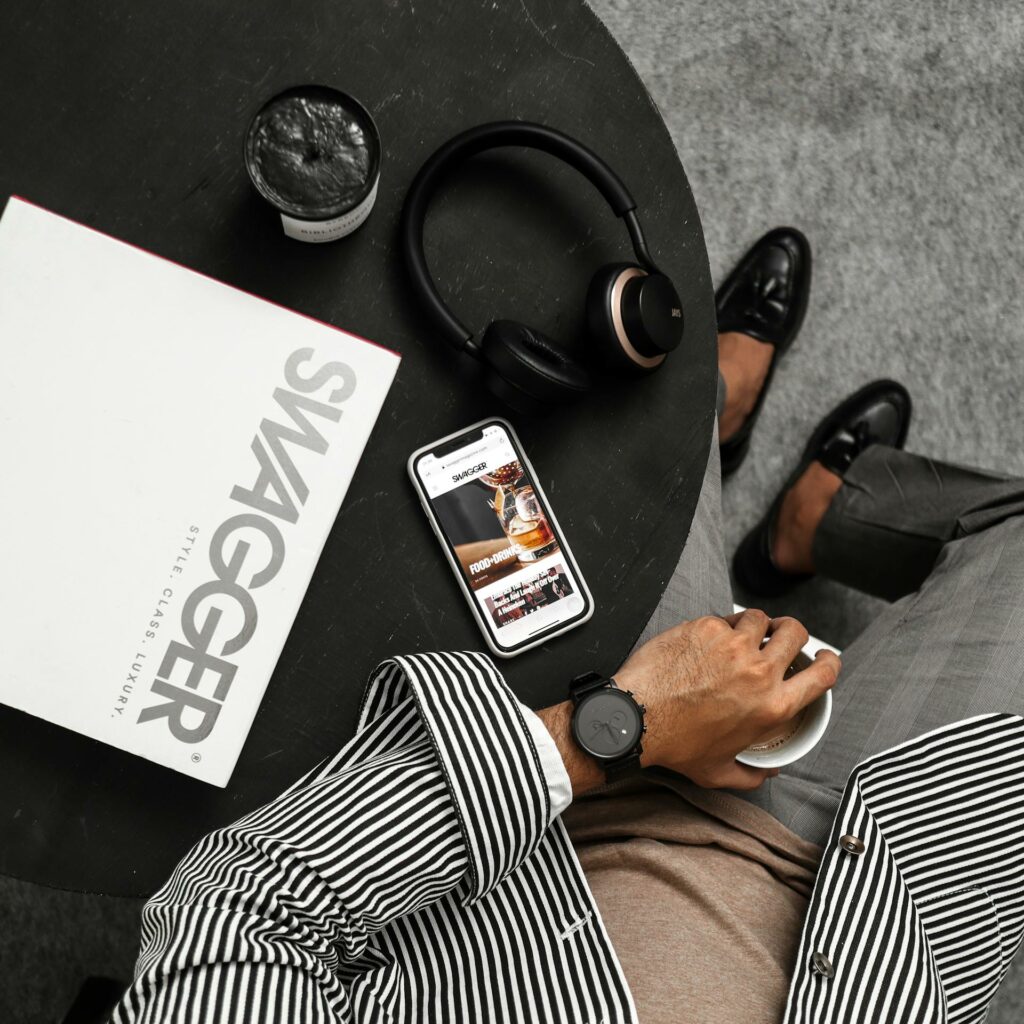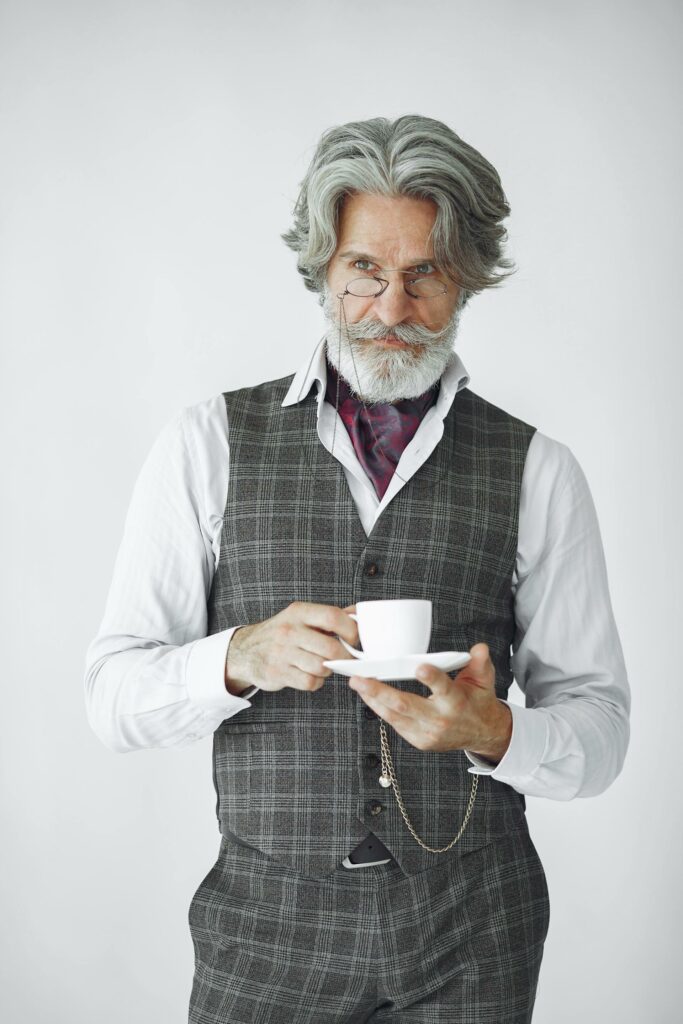The Return of the Goatee? Brad Pitt, De’Longhi and the Art of Aging with Style
There are few faces in contemporary cinema as universally recognizable as Brad Pitt’s—yet in the latest global campaign for Italian coffee brand De’Longhi, the actor appears subtly transformed. His hair is touched with silver, his beard grown into a full, graying goatee, the look effortless and unbothered. The choice is striking, not only for its authenticity but for what it suggests: Is the goatee—once a style both overdone and contested—making an unexpected return?
The short film in the campaign, set against the warm tones of an Italian morning, shows Pitt moving through his day with a calm assuredness. He buys coffee beans, rides through curving streets on his motorcycle, and returns home to make espresso on his De’Longhi machine—ritual, texture, rhythm. The camera lingers not on youth, but on presence. His goatee isn’t meant to make him look younger, but rather more himself.

In a culture that often tries to edit age away, this is quietly subversive.
A Beard with History
The goatee, culturally, has always been more than a grooming choice—it is a signifier. Its earliest origins trace back to Ancient Greece where the god Pan was portrayed with goat-like features, including a goatee-like beard. Later, during the Renaissance, scholars adopted trimmed facial hair to convey thoughtfulness and individuality.
In the 20th century, the goatee oscillated between sub-culture and mainstream:
- The Beat poets of the 1950s wore it as a rejection of conformity.
- Jazz musicians embraced it as a sign of cool improvisational identity.
- Then in the 1990s and early 2000s, it became associated with casual, sometimes unrefined fashion—its mystique diluted by ubiquity.
By the 2010s, the full beard reigned, and the goatee seemed destined for the archives of grooming fads. But now we’re witnessing something different. Grooming-trend forecasts for 2025 already list the goatee as one of the comeback styles—“The goatee is making a bold comeback in 2025,” writes a specialist grooming site.
Why This Image Resonates Now
We are living in a cultural moment where authenticity is aspirational. The polished but unpretentious aesthetic of the De’Longhi campaign mirrors a broader shift in global luxury: away from grandeur and toward quiet confidence. The silver goatee signals maturity, self-possession, ease—qualities that feel especially modern.
For many men of 40 and beyond, the question is no longer How do I hide age? but rather: How do I wear age beautifully?
Pitt’s goatee answers:
- Keep it intentional. It must be shaped, not accidental.
- Let the gray show. It becomes a mark of character not a flaw.
- Pair it with softness. Clothing in natural fibers, silhouettes that move, colors that breathe.
Understatement becomes its own form of elegance.
The Lifestyle Message Behind the Campaign
De’Longhi has understood something fundamental: luxury today is less about acquisition and more about experience. Their collaboration with Pitt does not just sell coffee equipment. It sells the morning ritual. The stolen moment of ease. The aroma that lingers before the day begins. Media coverage notes that the new campaign—directed by Taika Waititi and shot in New Zealand—re-imagines the user manual as a playful, cinematic narrative.
Fans are encouraged to share their own #Perfetto moments on social media, turning their coffee routines into small acts of indulgence. In this way, the goatee—like the espresso ritual—carries memory, texture, character. It is not an aesthetic stunt. It is an approach to life.
So, Will the Goatee Make a Comeback?
Perhaps. But not the flashy, hyper-styled goatee of decades past. What we are seeing instead is the rise of a look that is:
- considered but relaxed
- distinguished but not pretentious
- confident, with nothing to prove
If the trend takes hold it will be led by men willing to embrace the visibility of time—actors, architects, sommeliers, musicians, bon vivants. The sort who know that elegance deepens, rather than fades.
A return not to youth, but to self.

New Layers in the De’Longhi Collaboration
De’Longhi’s Perfetto platform is familiar — its brand promise, to transform coffee into ritual, remains intact. What’s new is the tone. The 2023 campaign, “From Bean to Cup”, took Pitt through Mediterranean vistas and cinematic interludes. The creative team included director Bennett Miller, cinematographer Greig Fraser, and composer Justin Hurwitz — names more often associated with arthouse films than product commercials.
The campaign’s reach was impressive: LBB (Little Black Book) reported that the prior 2021 debut campaign had reached 240 million people, increased brand awareness by 30 % globally, and spurred a +94 % rise in social conversation. The new chapter had strong ambitions, positioning De’Longhi’s machines — from Eletta Explore to Rivelia — not just as appliances, but as emotional companions in daily life.
More recently, in 2025, the brand released “The Perfetto Instruction for Use”, directed by Taika Waititi, with a humorous voiceover by Italian actor Riccardo Scamarcio. Pitt follows voiceover prompts in a short, tongue‑in‑cheek sequence as he navigates his morning espresso routine. This pivot toward playfulness suggests De’Longhi is leaning into the idea that ritual and ease need not exclude charm or levity.
Also notable: Pitt subtly nods to his relationship with jewelry designer Ines de Ramon, wearing pieces by her brand Anita Ko in this campaign. It’s a layering of identity — the star, the ritual, the personal — all within a single frame.
Grooming Trends Align with Cultural Shifts
We are amid a grooming evolution that compliments the style narrative De’Longhi sets. According to grooming forecasts, 2025 is favoring natural texture, intentional shape, and expressive comfort over sharp, over-engineered styles. Beard styles are trending toward softly tapered lines, refined stubble, and controlled grey — not contrived. The goatee fits into this quietly confident aesthetic: not a statement of rebellion, but a considered embrace of one’s changing self.
Barbers are also adapting. The “precision grooming” movement emphasizes skincare, beard conditioning, and clean cheek lines as staples of contemporary men’s care. In New York, for example, 2025 is seeing a boom in sharp cheek lines paired with tapered beard styles, which balance structure with softness. Even in London, barbers are blending traditional forms with modern minimalism — the Mayfair Classic (a short, naturally shaped beard) is gaining traction.
What this signals: men are no longer hiding their age; they’re framing it—letting salt and pepper show, but with control and clarity.
Cultural Echoes: Identity, Ritual, and Intent
The goatee’s potential comeback is less about trend‑hopping and more about culture catching up. In a time when longevity, wellness, and authenticity are elevated, men’s image is becoming less about denial of age and more about owning one’s story.
Pitt’s portrayal isn’t just aspirational—it’s plausible. He’s not trying to look younger. He’s showing a man at ease in his decades, whose rituals (like brewing espresso) anchor him. And the visual choice of grey reflects a larger shift in fashion and beauty: inclusivity of age.
Moreover, the decision to cast Pitt in Italy, to film in Mediterranean light, to bring artisan textures into the frame—all of this echoes French Quarter Magazine’s own values: heritage, craft, timelessness. It’s a cross-cultural dialogue of style, ritual, and identity.
Header Photo Credit: Gustavo Fring https://www.pexels.com/photo/a-man-in-plaid-suit-holding-a-white-ceramic-cup-4975619/





















Fantastic read! This article does an excellent job of breaking down what smart homes are and how they’re transforming modern…